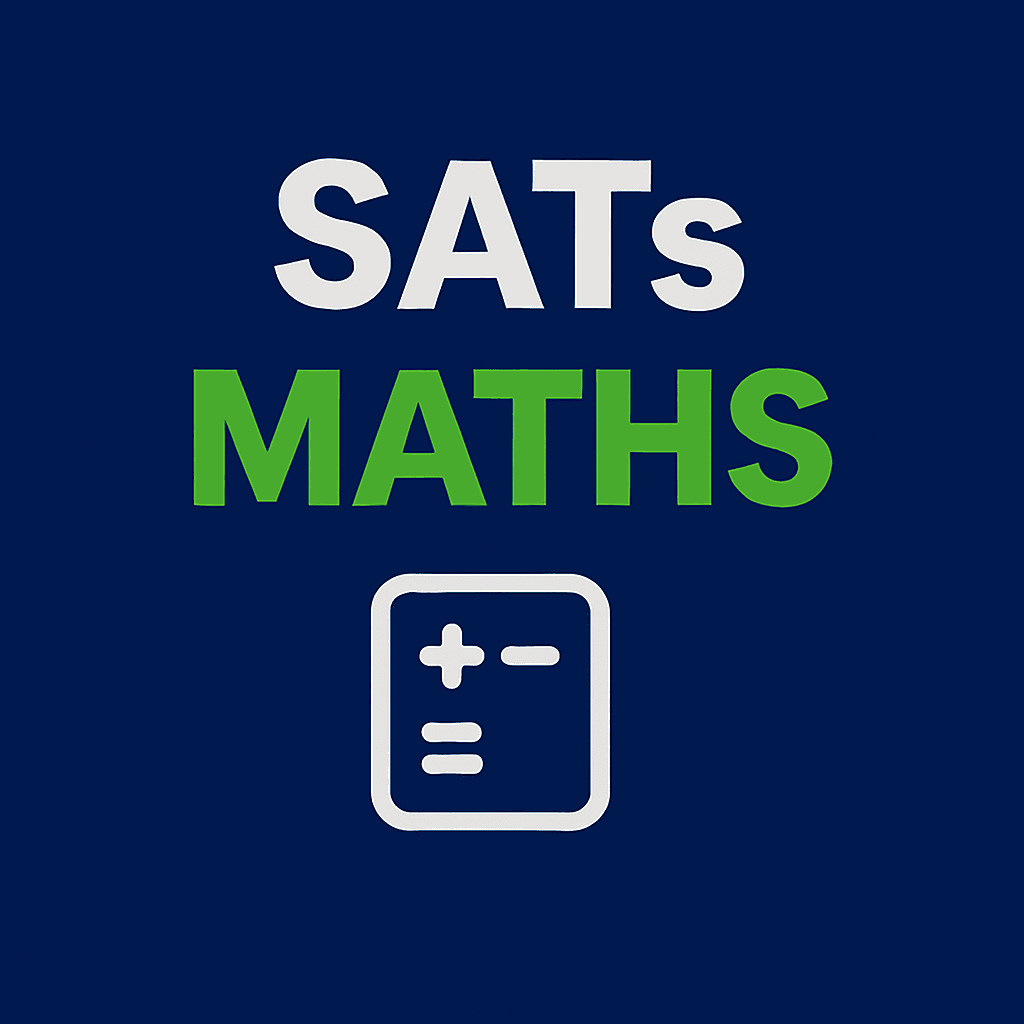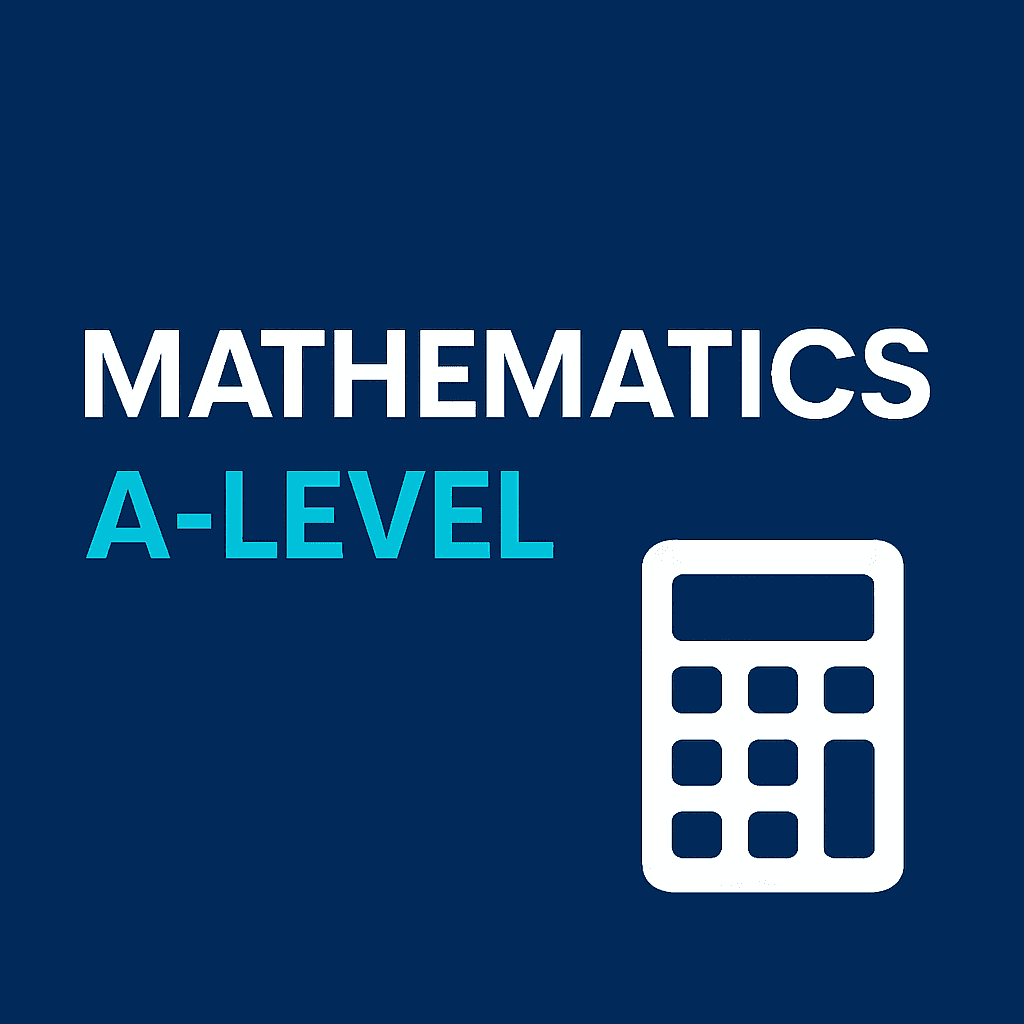SAT Mathematics – Mastering Linear Equations

Mastering Linear Equations: A Step-by-Step SAT Maths Guide Introduction to Linear Equations Linear equations form the foundation of SAT Mathematics and appear consistently in both the calculator and no-calculator sections. Whether you’re preparing in the UK, Europe, or internationally, mastering this topic is crucial for success. This guide will explain: What linear equations are. Step-by-step […]
Vectors and Matrices: A-Level Mathematics Guide to Vectors and Matrix Operations

Vectors and Matrices: A-Level Mathematics Guide to Vector and Matrix Operations What Are Vectors? A vector is a mathematical object that has both magnitude (length) and direction. Vectors are often represented in Science and engineering to describe quantities such as velocity, force, and displacement. Vectors are typically written in component form, using coordinates along the […]
Differentiation and Integration: Advanced Techniques and Applications
Differentiation and Integration: Advanced Techniques and Applications What Is Differentiation? Differentiation is the process of finding the rate of change of a function. It provides a way to compute the gradient of a curve at any point, which is essential in understanding the behaviour of functions in calculus. In A-Level Mathematics, advanced techniques of differentiation […]
Statistics and Probability: Correlation and Regression Analysis
Statistics and Probability: Correlation and Regression Analysis What Is Correlation? Correlation measures the strength and direction of a linear relationship between two variables. It is commonly denoted as and can range from to , where: indicates a perfect positive correlation, indicates a perfect negative correlation, indicates no linear relationship. Types of Correlation Positive Correlation A […]
Statistics and Probability: Sampling and Hypothesis Testing

Statistics and Probability: Sampling and Hypothesis Testing What Is Sampling? Sampling is the process of selecting a subset of individuals or items from a larger population to make inferences about the population as a whole. In statistics, it’s often not practical or possible to study an entire population, so samples are used instead. There are […]
Probability Distributions: Binomial and Normal Distributions
Probability Distributions: Binomial and Normal Distributions What Is a Probability Distribution? A probability distribution describes how the probabilities are distributed over the values of a random variable. There are two main types of distributions that are particularly useful in A-Level Mathematics: the binomial distribution and the normal distribution. Binomial Distribution The binomial distribution describes the […]
Statistics and Probability: Understanding Data Representation and Probability
Statistics and Probability: Understanding Data Representation and Probability What Is Statistics? Statistics is the branch of Mathematics that deals with collecting, analysing, interpreting, presenting, and organising data. In A-Level Mathematics, you will learn how to represent data in various forms, calculate statistical measures, and interpret results. Data Representation Data representation is the process of displaying […]
Mechanics: Circular Motion and Gravitation

Mechanics: Circular Motion and Gravitation What Is Circular Motion? Circular motion occurs when an object moves in a circular path. It is governed by the principle that there is a constant force acting on the object to keep it in motion along the circle. The force that keeps an object moving in a circle is […]
Mechanics: Work, Energy, and Power

Mechanics: Work, Energy, and Power Work, Energy, and Power What Is Work? In Science, work is done when a force causes an object to move in the direction of the force. The formula for work is: Where: is the work done (in joules, J), is the force applied (in newtons, N), is the […]
Mechanics: Dynamics – Force and Newton’s Laws of Motion
Mechanics: Dynamics – Force and Newton’s Laws of Motion What Is Dynamics? Dynamics is the branch of mechanics concerned with the relationship between the motion of objects and the forces acting on them. It involves understanding how forces cause objects to move or change velocity. Newton’s First Law of Motion Newton’s First Law, also known […]
Mechanics: Kinematics – Understanding Motion and Forces

Mechanics: Kinematics – Understanding Motion and Forces What Is Kinematics? Kinematics is the branch of mechanics that deals with the motion of objects without considering the forces that cause the motion. It involves studying the relationships between displacement, velocity, acceleration, and time. Key Concepts in Kinematics Displacement and Distance Displacement: A vector quantity that refers […]
Calculus: Integration and Its Applications

Calculus: Integration and Its Applications What Is Integration? Integration is the reverse process of differentiation. While differentiation calculates the rate of change, integration helps to find the total quantity from a rate of change. The result of an integration is often referred to as the antiderivative. There are two main types of integrals: Indefinite Integral: […]
Calculus: Differentiation and Its Applications

Calculus: Differentiation and Its Applications What Is Differentiation? Differentiation is a fundamental concept in calculus that deals with the rate of change of a function. The derivative represents the slope or instantaneous rate of change at a specific point. The Derivative: Basic Definition The derivative of a function is defined as: This limit […]
Hooke’s Law: Understanding the Relationship between Force and Extension
Hooke’s Law: Understanding the Relationship Between Force and Extension What Is Hooke’s Law? Hooke’s Law is a fundamental principle in Science that describes how materials deform when a force is applied to them. Specifically, it states that the force required to extend or compress a spring by a distance is directly proportional to the displacement, […]
Trigonometry: Understanding Sine, Cosine, and Tangent
Trigonometry: Understanding Sine, Cosine, and Tangent What Is Trigonometry? Trigonometry is the branch of Mathematics that deals with the relationships between the sides and angles of triangles, particularly right-angled triangles. It is fundamental in various fields, including Science, engineering, and astronomy. Key Trigonometric Ratios Definitions In a right-angled triangle, the trigonometric ratios are defined as […]
Geometry: Exploring Angles, Circles, and Transformations
Geometry: Exploring Angles, Circles, and Transformations What Is Geometry? Geometry is the branch of Mathematics that deals with shapes, sizes, and the properties of space. It involves the study of points, lines, angles, and surfaces. Geometry plays a significant role in various fields, including architecture, engineering, Science, and even art. Angles and Their Types Key […]
Algebra: Solving Linear and Quadratic Equations
Algebra: Solving Linear and Quadratic Equations What Is Algebra? Algebra is a branch of Mathematics that deals with symbols and the rules for manipulating these symbols. It is a unifying thread of almost all of Mathematics and includes everything from solving simple equations to studying abstractions like groups, rings, and fields. Linear Equations Standard Form […]
Numbers: Mastering Real, Rational, and Irrational Numbers

Numbers: Mastering Real, Rational, and Irrational Numbers What Are Numbers? Numbers form the foundation of Mathematics, classifying quantities and measurements into different types for specific uses. Types of Numbers Real Numbers () Real numbers include all numbers on the number line, covering both rational and irrational numbers. Rational Numbers () Rational numbers are expressed as […]
Science and the Environment: Renewable Energy and Sustainability
Science and the Environment: Renewable Energy and Sustainability What Is Renewable Energy? Renewable energy comes from natural sources that replenish over time, such as sunlight, wind, and geothermal heat. Types of Renewable Energy Solar Energy Photovoltaic cells convert sunlight into electricity. Wind Energy Turbines harness wind to generate electricity. Geothermal Energy Heat from beneath the […]
Applied Science: Energy Efficiency and Thermoelectric Materials
Applied Science: Energy Efficiency and Thermoelectric Materials What Is Energy Efficiency? Energy efficiency measures how effectively energy input is converted into useful output. Formula: Thermoelectric Materials Thermoelectric materials convert heat directly into electricity using the Seebeck effect. Applications: Power Generation: Capturing waste heat from industrial processes Space Exploration: Powering spacecraft with thermoelectric generators […]

